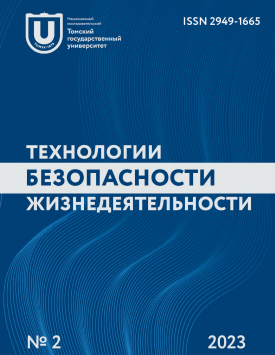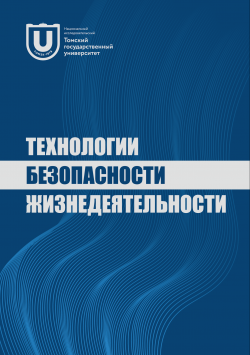Reconfigurable control algorithms for stabilizing safe UAV movement
Unmanned aerial vehicles means a vehicle without a crew on board. Multirotor type aircraft are part of the UAV variety. To date, there are a huge number of implementations of aircraft, in view of the widespread development of technologies and the reduction in the cost of components that make up the UAV. The versatility of UAVs allows them to be used to solve a wide variety of tasks: geodetic surveys, drawing up cadastral plans, monitoring transport infrastructure, energy facilities and pipelines, determining the volume of mine workings and dumps, accounting for the movement of bulk cargo, creating maps and terrain plans, rescue, reconnaissance and military operations, forest fire detection, aerial photography, etc. The absence of a person on board makes it possible to remove restrictions on the use of UAVs in conditions dangerous to the life and health of the crew. Due to the active development of this technology, the use of UAVs in civilian and other tasks is constantly growing, which causes a natural need for the safe operation of UAVs. In particular, safe flight in normal operating modes and in critical operating modes. One of the ways to solve this problem is the use of specialized control algorithms. In this paper, we consider algorithms with a reconfigurable structure that allow you to enter such an operating mode when any disturbances from the outside are not perceived by the system within certain limits. The problem is to choose such a control algorithm where the output value of the plant would coincide with the reference value in some acceptable limits when external coordinate and parametric disturbances change. The relationship between the input and output of the object becomes ambiguous and indefinite, which greatly complicates the solution of the problem. The paper presents the implementation of PID and reconfigurable structure controllers in the MATLAB software package. The features of the quadcopter dynamics and the response of the control system to coordinate and parametric disturbances are taken into account at the stages of modeling. The object of study in this work is the height controller. As a result, graphs of the change in the current height relative to the specified height are given, thereby forming a control error, which is processed by the controller. The graphs show the control signals generated by various controllers. The analysis shows the immunity of controllers with a variable structural to various kinds of external disturbances. Indicators of the quality of management were calculated according to the second integral criterion. The authors declare no conflicts of interests.
Keywords
reconfigurable system,
PID control,
UAV,
quadcopter,
super-twisting mode,
sliding modeAuthors
| Okunsky Mikhail V. | Tomsk State University | mvokunsky@gmail.com |
| Shidlovskiy Stanislav V. | Tomsk State University | shidlovskysv@mail.ru |
Всего: 2
References
Кузнеченков Е.О. Коптеры: новые конструкции и возможности // Синергия наук. 2017. № 18. С. 935-942.
Белоглазов Д.А., Коберси Е.Ю. Анализ особенностей практического использования регуляторов систем автоматического управления квадрокоптерами // Инженерный вестник Дона. 2015. № 3 (37). С. 22.
Яковлев К.С., Макаров Д.А., Баскин Е.С. Метод автоматического планирования траектории беспилотного летательного аппарата в условиях ограничений на динамику // Искусственный интеллект и принятие решений. 2014. № 4. С. 3-17.
Павловский В.Е., Яцун С.Ф., Емельянова О.В., Савицкий А.В. Моделирование и исследование процессов управления квадро-коптером // Робототехника и техническая кибернетика. 2014. № 4 (5). С. 49-57.
Херас И.Х.Г. Развитие беспилотных летательных аппаратов // Качество в производственных и социально-экономических системах: сборник научных трудов 7-й Международной научно-технической конференции. Курск, 2019. С. 162-164.
Иноземцев Д.П. Беспилотные летательные аппараты: Теория и практика // Автоматизированные технологии изысканий и проектирования. 2013. № 2. С. 50-54.
Manal S. Esmail, Mohamed H. Merzban, Ashraf A.M. Khalaf, Hesham F.A. Hamed, Aziza I. Hussein. Attitude and Altitude Nonlinear Control Regulation of a Quadcopter Using Quaternion Representation // IEEE Access. 2022. V. 10. P. 5884-5894.
Senthil Kumar S., Vijayanandh R., Mano S. Mathematical modelling and attitude control of quadcopter based on classical controller // International Journal of Vehicle Structures and Systems. 2018. V. 10, № 5. P. 318-323.
Cowling I.D., Whidborne J.F., Cooke A.K. Optimal trajectory planning and LQR control for a quadrotor UAV // UKACC Int. Conf. Control (ICC2006). 2006.
Юшкин Д.А., Евдокимов С.А. Разработка адаптивного нечеткого ПИД-регулятора системы автоматического управления и стабилизации мультироторного БПЛА типа квадрокоптер // Актуальные проблемы современной техники, науки и образования. 2015. Т. 2, № 1. С. 194-198.
Miladi N., Ladhari T., Said S., M'sahli F. Tracking Control of Quadcopter Using Explicit Nonlinear Model Predictive Control // 15th International Multi-Conference on Systems, Signals & Devices (SSD). 2018.
Guilherme V.R., Manuel G.O., Francisco R.R. Robust Nonlinear Control for Path Tracking of a Quad-Rotor Helicopter. 2015 V. 17. I. 1. P. 142-156.
Ashis C.K., RahulSharma K. Dynamic Modeling and Altitude Control of Parrot Rolling Spider using LQR // 2nd International Conference on Intelligent Computing, Instrumentation and Control Technologies (ICICICT). 2019.
Kuantama E., Tarca I., Tarca R. Feedback Linearization LQR Control for Quadcopter Position Tracking // 5th International Conference on Control, Decision and Information Technologies (CoDIT). 2018.
Argentim L., Rezende W., Santos P., Aguiar R. PID, LQR and LQR-PID on a quadcopter platform // 2013 International Conference on Informatics, Electronics and Vision (ICIEV). 2013.
Jing Y., Mirza A., Sipahi R., Martinez-Lorenzo J. Sliding Mode Controller with Disturbance Observer for Quadcopters; Experiments with Dynamic Disturbances and in Turbulent Indoor Space // Drones. 2023. V. 7. P. 1-41.
Shtessel Y., Edwards C., Fridman L., Levant A. Sliding mode control and observation. 2014. P. 1-356.
Емельянов С.В., Коровин С.К. Новые типы обратной связи: Управление при неопределенности. М.: Наука; Физматлит, 1997. C. 1-352.
Chater E.A., Housny H., Fadil H.E. Robust Sliding Mode Control for Quadrotor UAV // IEEE 2nd International Conference on Electronics, Control, Optimization and Computer Science (ICECOCS). 2020. P. 1-6.
Гурьянов А.Е. Моделирование управления квадрокоптером // Инженерный вестник. 2014. № 8. С. 1-4.
Luukkonen T. Modelling and control of quadcopter // Independent research project in applied mathematics. 2011. P. 1-26.
Финаев В.И., Шаповалов И.О., Мельниченко А.С. Моделирование полета квадрокоптера при применении ПИД-регулирования // Известия ЮФУ. 2015. № 2 (163). С. 40-49.
Емельянов С.В. Системы автоматического управления с переменной структурой. М.: Наука, 1967. C. 1-336.
Шидловский С.В. Автоматическое управление. Реконфигурируемые системы: учеб. пособие. Томск: Изд-во Том. ун-та. 2010. C 1-168.

